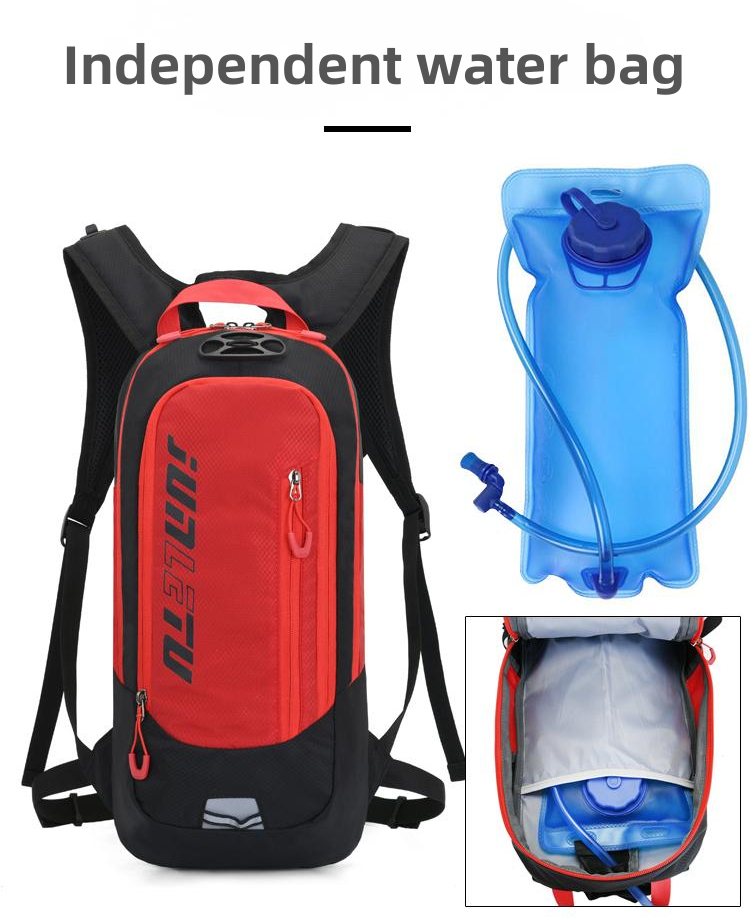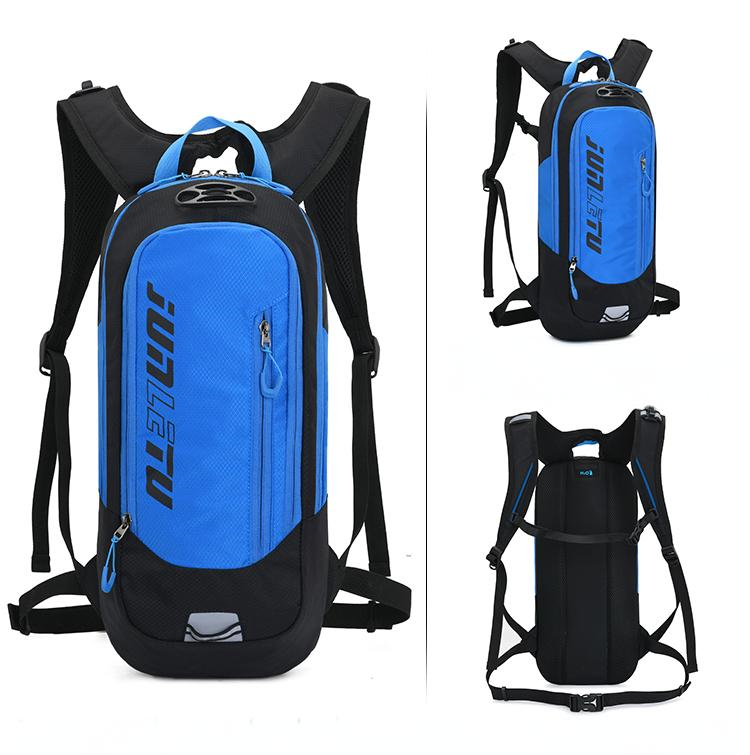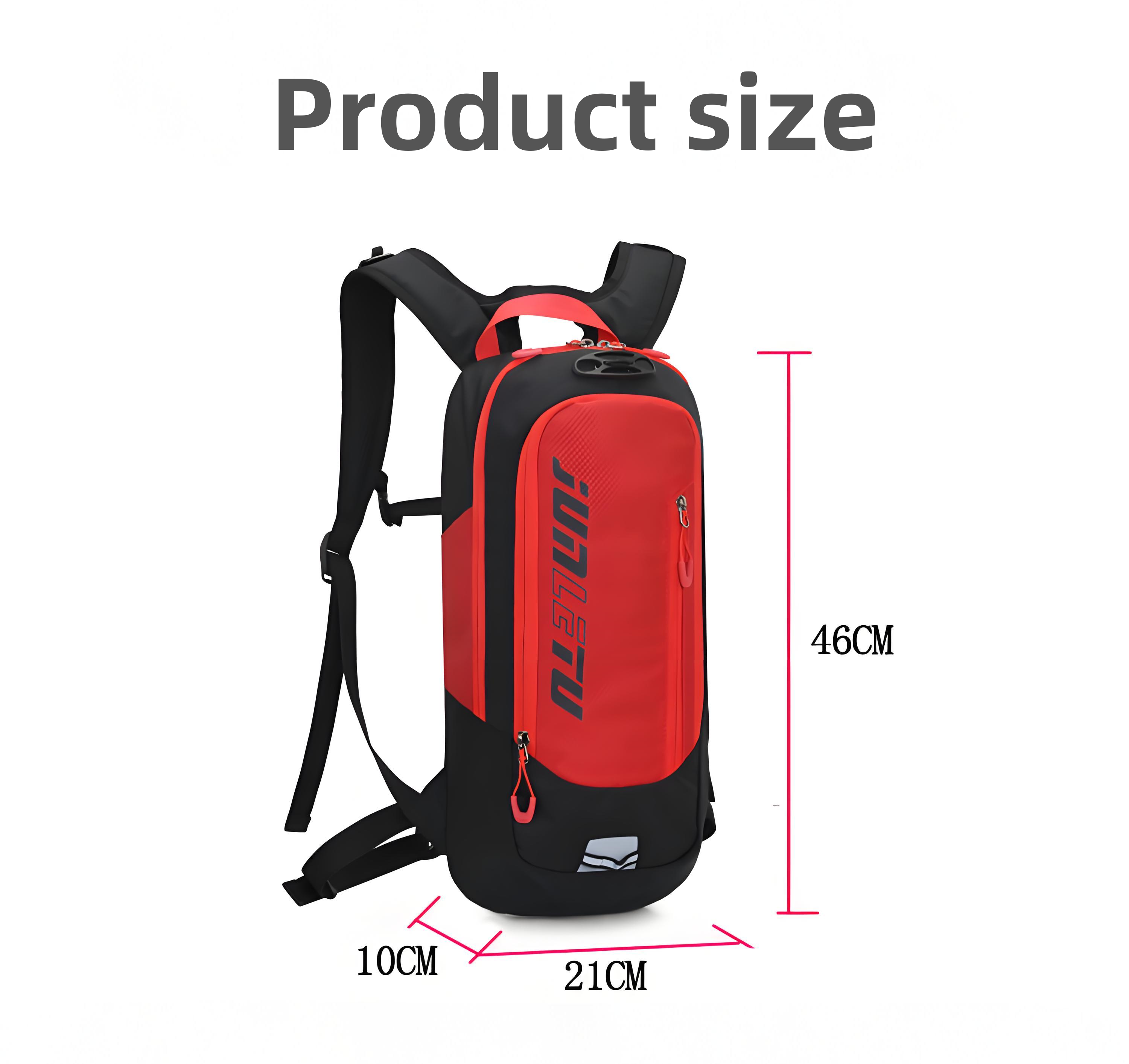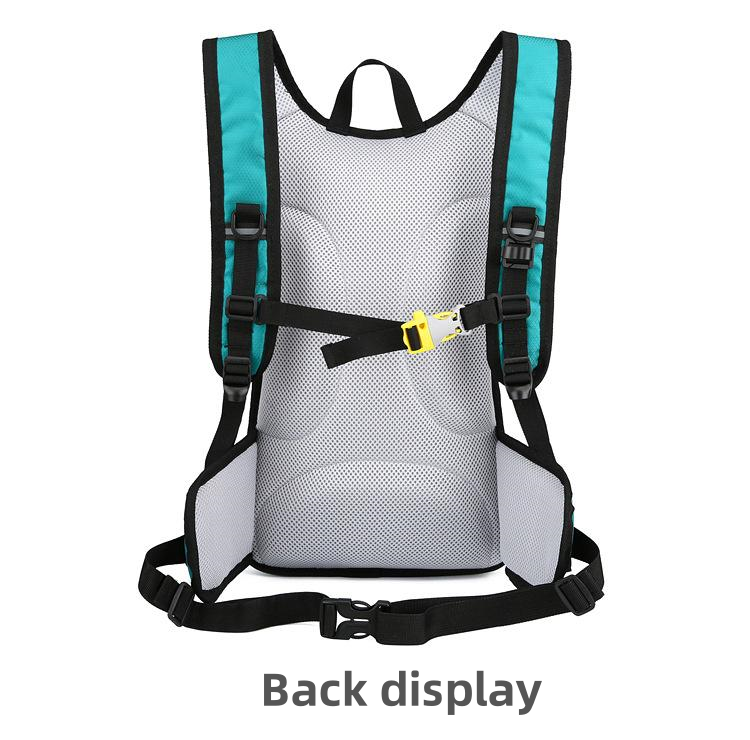As someone who’s logged countless miles hiking, trail running, and biking through mountains, forests, and deserts, I can tell you that staying hydrated is the backbone of any successful outdoor adventure. A hydration bladder—that sleek, flexible water reservoir tucked into your backpack—has become my go-to for hands-free, on-the-go hydration. But if you’re new to using one, the setup and maintenance can feel a bit daunting. I still remember my first time fumbling with a hydration bladder on a dusty trail, wondering why water wasn’t flowing and how to keep it clean. In this article, I’ll walk you through how to use a hydration bladder in your outdoor sports backpack, step by step, with practical tips from my own experiences to ensure you stay hydrated without the hassle. Whether you’re prepping for a day hike or a multi-day trek, this guide will help you master your hydration system.

1. What Is a Hydration Bladder and Why Use One?
A hydration bladder is a flexible, leak-proof bag (usually made of TPU or polyethylene) that holds water and connects to a drinking tube with a mouthpiece. Designed to fit inside a backpack, it allows you to sip water without stopping or digging out a bottle. Unlike traditional water bottles, hydration bladders offer hands-free convenience, larger capacities (1–3 liters), and a low profile that distributes weight evenly.
I switched to hydration bladders years ago during a sweltering summer hike when stopping to unscrew a bottle every 10 minutes was slowing me down. The ability to sip while moving was a game-changer, especially on steep climbs or fast-paced trail runs. But to get the most out of your bladder, you need to know how to set it up, use it, and maintain it properly. Let’s break it down.
2. Step-by-Step Guide to Using a Hydration Bladder
Here’s how to get your hydration bladder ready for action, based on my tried-and-true routine.
a. Choose the Right Hydration Bladder
Not all bladders are created equal. When picking one, consider:
Capacity: 1L for short hikes, 2L for day trips, 3L for long adventures.
Compatibility: Ensure it fits your backpack’s hydration sleeve or compartment.
Features: Look for quick-release tubes, bite valves with shut-off mechanisms, and wide openings for easy filling and cleaning.
I use a 2L CamelBak for most hikes—it’s lightweight and fits my Osprey pack perfectly. Brands like Platypus, Hydrapak, and Osprey also make reliable options. Check user reviews for durability and ease of use.

b. Prepare the Bladder Before First Use
Before your first adventure, clean and test the bladder:
Rinse Thoroughly: Fill the bladder with warm water and a drop of mild dish soap, shake gently, and flush through the tube. Rinse multiple times to remove any manufacturing residues.
Check for Leaks: Fill with water, seal it, and gently squeeze to ensure no leaks at the seams or tube connection.
Dry Completely: Air-dry with the bladder open to prevent mold.
My first bladder came with a slight plastic taste that took a few rinses to eliminate. Don’t skip this step—it ensures your water tastes fresh.
c. Fill the Bladder
Filling your bladder correctly prevents spills and ensures smooth flow:
Open the Reservoir: Most bladders have a screw cap, slide-lock, or fold-top closure. Open it fully for easy filling.
Use Clean Water: Fill with potable water, ideally filtered if you’re sourcing from streams. I carry a portable filter for backcountry trips.
Avoid Overfilling: Fill to just below the max line to allow air for expansion and prevent strain on seams.
Secure the Seal: Double-check that the cap or closure is tight to avoid leaks.
I learned the hard way to avoid overfilling—once, I stuffed a 2L bladder to the brim, and it leaked inside my pack during a bumpy descent. Now, I leave a little room for air.
d. Insert into Your Backpack
Most outdoor backpacks have a dedicated hydration sleeve or compartment:
Locate the Sleeve: Find the internal pocket (usually near the back panel) and slide the bladder in, with the tube outlet at the bottom.
Route the Tube: Thread the drinking tube through the designated loop or port on your pack (often on the shoulder strap or side).
Secure the Mouthpiece: Clip or magnetize the mouthpiece to your shoulder strap for easy access. I use a magnetic clip to keep mine from dangling.
On a recent trail run, I forgot to secure the tube, and it swung wildly until I stopped to clip it. Take a moment to route it neatly—it’s worth it.
e. Using the Bladder on the Trail
Once you’re moving, sipping from a hydration bladder is straightforward:
Bite and Sip: Most mouthpieces require a gentle bite to open the valve, then suck to draw water. Practice at home to get the hang of it.
Adjust Flow: Some bladders have adjustable valves to control water flow. I set mine to a steady trickle for sipping without choking.
Blow Back: After drinking, blow air back into the tube to prevent water from pooling and freezing in cold weather.
I’ve found that sipping small amounts frequently keeps me hydrated without overloading my stomach, especially on long climbs.

f. Post-Hike Maintenance
Proper care extends your bladder’s life:
Empty and Rinse: Drain all water and rinse with warm water and mild soap. Use a tube brush to clean the drinking tube.
Dry Thoroughly: Hang the bladder upside down with the cap off, and insert a drying aid (like a rolled-up paper towel) to keep it open. I store mine in the freezer between trips to prevent mold.
Inspect Regularly: Check for wear, cracks, or mold, especially around the tube and mouthpiece.
Once, I neglected to dry my bladder properly, and a funky smell greeted me on my next hike. Now, I’m religious about cleaning and drying.
3. Comparing Hydration Bladders to Other Hydration Options
To help you decide if a hydration bladder is right for you, here’s a table comparing it to other common hydration methods:
| Hydration Method | Ease of Use | Capacity | Portability | Best For |
|---|---|---|---|---|
| Hydration Bladder | Moderate, requires setup | 1–3L | High, fits in pack | Long hikes, trail running, biking |
| Water Bottle | Easy, grab and drink | 0.5–1L | Medium, bulky in hand | Short hikes, casual outings |
| Soft Flask | Easy, flexible design | 0.25–0.75L | High, fits pockets | Trail running, fast-paced hikes |
| Collapsible Bottle | Moderate, needs refilling | 0.5–1L | High, compact when empty | Day hikes, travel |
This table shows that hydration bladders excel for high-capacity, hands-free hydration but require more maintenance than bottles.
4. Tips for Getting the Most Out of Your Hydration Bladder
Here are some extra pointers from my years of trial and error:
Insulate in Cold Weather: In freezing temps, water in the tube can freeze. Use an insulated tube sleeve or blow water back into the reservoir after each sip. I learned this during a winter hike when my tube turned into an icicle!
Use Electrolytes Sparingly: Electrolyte mixes are great for hydration but can leave residue. Dilute them and clean the bladder thoroughly after use.
Check Tube Length: If the tube is too long, it may dangle or snag. Trim it (see my previous article on managing long tubes) or secure it with clips.
Practice Accessibility: Position the mouthpiece where you can sip without looking. I test mine while walking to ensure it’s intuitive.
Carry a Backup: For long trips, bring a small bottle or filter as a backup in case the bladder leaks. I always pack a 0.5L soft flask for peace of mind.

5. Common Mistakes to Avoid
Even seasoned hikers make hydration bladder blunders. Here are pitfalls I’ve encountered and how to dodge them:
Not Testing Beforehand: Always test your bladder at home to ensure no leaks or setup issues. I once discovered a faulty valve mid-hike—not fun.
Overfilling: Too much water stresses the seams and makes the pack heavy. Stick to the recommended capacity.
Neglecting Cleaning: Skipping post-hike cleaning leads to mold or bad tastes. I set a reminder to clean mine after every trip.
Poor Tube Routing: A loose tube can snag on branches or rub your skin. Route it through pack loops or under your arm for stability.
6. Is a Hydration Bladder Right for You?
Hydration bladders are ideal for activities requiring hands-free hydration, like hiking, biking, or skiing, but they’re not for everyone. If you prefer quick access without maintenance, a water bottle might suit you better. For me, the convenience of sipping on the move outweighs the extra care, especially on long treks where carrying multiple bottles is impractical.
I’ve seen hydration bladders shine on group hikes, where friends could focus on the trail instead of fumbling with gear. But for short walks or urban outings, I sometimes opt for a simple flask to keep things light.
7. The Future of Hydration Bladders
The hydration bladder market is evolving, with brands introducing antimicrobial coatings, quick-fill ports, and modular designs. I’ve tested a prototype with a retractable tube that minimizes dangling—pretty innovative! As materials improve, bladders are becoming lighter and more durable, making them even more appealing for outdoor enthusiasts.
Final Thoughts: Hydrate Smart, Adventure Freely
Mastering your hydration bladder is about preparation, practice, and maintenance. From choosing the right model to cleaning it properly, these steps ensure you stay hydrated without gear-related headaches. As someone who’s relied on bladders for everything from desert treks to snowy summits, I can say they’re a reliable companion when used correctly. Take the time to set yours up right, and you’ll wonder how you ever adventured without one.
Have more questions about hydration gear or outdoor tips? Drop me a line—I’m happy to help you gear up for your next journey!

Related Q&A
1. How do I know what size hydration bladder to get?
Choose based on your activity: 1L for short hikes, 2L for day trips, and 3L for multi-day treks. Ensure it fits your backpack’s hydration sleeve.
2. Can I put sports drinks in my hydration bladder?
Yes, but dilute them to avoid residue buildup. Clean thoroughly after use with warm water and a tube brush to prevent stickiness or mold.
3. How often should I clean my hydration bladder?
Rinse after every use, and do a deep clean (with soap and a brush) monthly or after using sugary drinks. Dry completely to prevent mold.
4. What if my hydration bladder leaks?
Check the cap, seams, and tube connections for damage. Use a repair kit for small punctures, or contact the manufacturer for replacements.
5. Are hydration bladders better than water bottles?
Bladders are better for hands-free, high-capacity hydration on long activities. Bottles are simpler for short trips or low-maintenance needs.